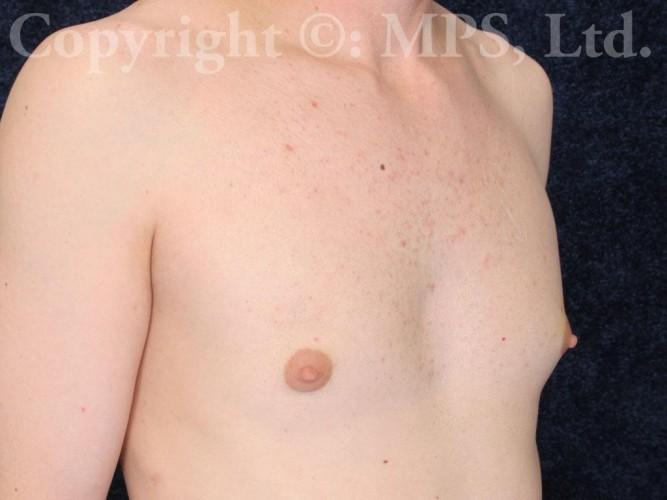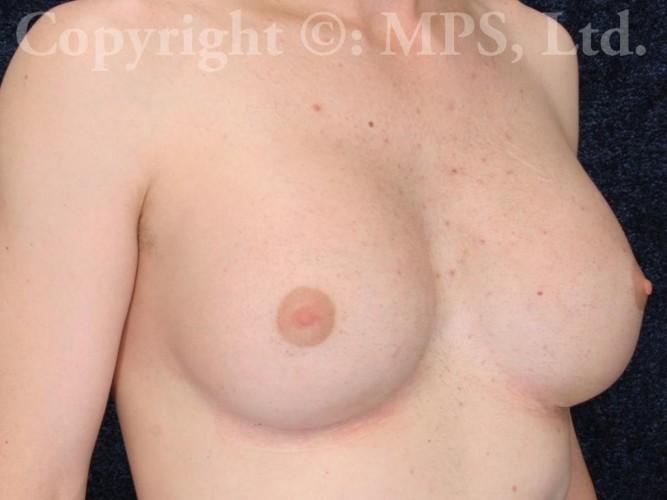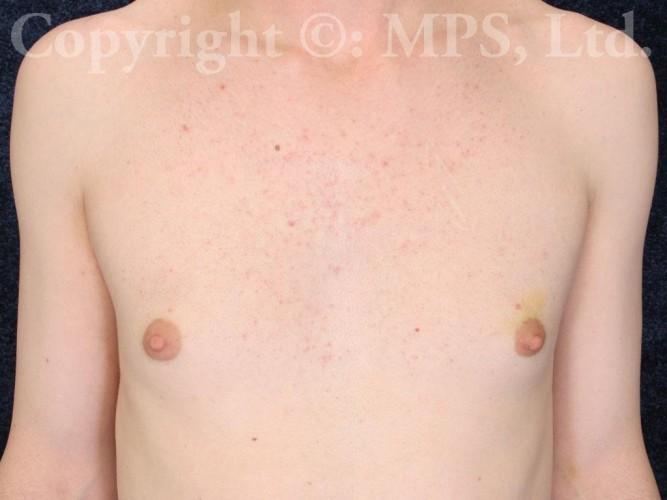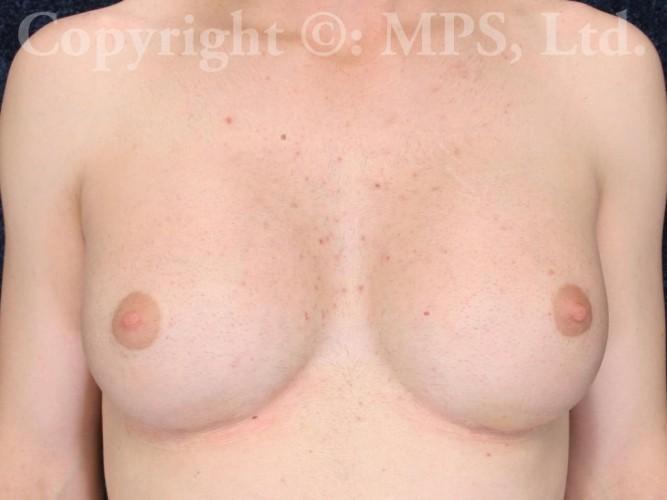Transgender (M-F) Breast Augmentation - Case 4
 Before (after hormones only)
Before (after hormones only)
 After (1 week after second stage)
After (1 week after second stage)
 Before (after hormones only)
Before (after hormones only)
 After (1 week after second stage)
After (1 week after second stage)
Case Description
This 38 year-old male to female transgender patient has been on hormone therapy for some time, and developed nearly no breast tissue for her 6’0″ height and chest/breast base diameter. Single-stage breast augmentation was judged to be inadequate to give a pleasing, feminine, proportionate result, so two-stage surgery was recommended as a way of minimizing the likelihood of multiple unplanned operations that may have followed failed single-stage implant placement. Crescent-shaped expanders were placed in her first surgery, then gradually expanded over two months. 7 months after her first surgery, her expanders were removed and 700cc moderate plus profile cohesive silicone gel prostheses were placed in a second operation. This size of implants would not have been possible with a single stage (or would have yielded a hard, round, unnaturally tight appearance, usually leading to multiple unanticipated re-operations). Post-op photographs are shown at one week after her second operation. Inframammary scars are still pink but barely visible.
